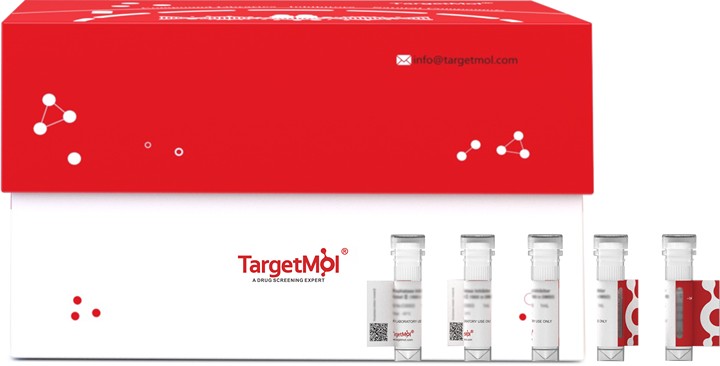Shopping Cart
Remove All Your shopping cart is currently empty
Your shopping cart is currently empty
Human coronavirus OC43 Spike glycoprotein (His & Myc) is expressed in HEK293.

| Pack Size | Price | USA Warehouse | Global Warehouse | Quantity |
|---|---|---|---|---|
| 5 μg | $133 | 20 days | 20 days | |
| 10 μg | $219 | 20 days | 20 days | |
| 20 μg | $368 | 20 days | 20 days | |
| 50 μg | $678 | 20 days | 20 days | |
| 100 μg | $1,080 | 20 days | 20 days | |
| 200 μg | $1,680 | 20 days | 20 days | |
| 500 μg | $2,970 | 20 days | 20 days | |
| 1 mg | $4,770 | 20 days | 20 days |
| Biological Activity | Activity has not been tested. It is theoretically active, but we cannot guarantee it. If you require protein activity, we recommend choosing the eukaryotic expression version first. |
| Description | Human coronavirus OC43 Spike glycoprotein (His & Myc) is expressed in HEK293. |
| Species | HCoV-OC43 |
| Expression System | HEK293 Cells |
| Tag | C-6xHis-Myc |
| Accession Number | P36334 |
| Synonyms | Spike glycoprotein,S glycoprotein,Peplomer protein,E2 |
| Amino Acid | TVQPIADVYRRKPNLPNCNIEAWLNDKSVPSPLNWERKTFSNCNFNMSSLMSFIQADSFTCNNIDAAKIYGMCFSSITIDKFAIPNGRKVDLQLGNLGYLQSFNYRIDTTATSCQLYYNLPAANVSVSRFNPSTWNKRFGFIEDSVFKPRPAGVLTNHDVVYAQHCFKAPKNFCPCKLNGSCVGSGPGKNNGIGTCPAGTNYLTCDNLCTPDPITFTGTYKCPQTKSLVGIGEHCSGLAVKSDYCGGNSCTCRPQAFLGWSADSCLQGDKCNIFANFILHDVNSGLTCSTDLQKANTDIILGVCVNY |
| Construction | 318-624 aa |
| Protein Purity | > 90% as determined by SDS-PAGE. |
| Molecular Weight | 38 kDa (predicted) |
| Endotoxin | < 1.0 EU/μg of the protein as determined by the LAL method. |
| Formulation | If the delivery form is liquid, the default storage buffer is Tris/PBS-based buffer, 5%-50% glycerol. If the delivery form is lyophilized powder, the buffer before lyophilization is Tris/PBS-based buffer, 6% Trehalose, pH 8.0. |
| Reconstitution | Reconstitute the lyophilized protein in sterile deionized water. The product concentration should not be less than 100 μg/mL. Before opening, centrifuge the tube to collect powder at the bottom. After adding the reconstitution buffer, avoid vortexing or pipetting for mixing. |
| Stability & Storage | Lyophilized powders can be stably stored for over 12 months, while liquid products can be stored for 6-12 months at -80°C. For reconstituted protein solutions, the solution can be stored at -20°C to -80°C for at least 3 months. Please avoid multiple freeze-thaw cycles and store products in aliquots. |
| Shipping | In general, Lyophilized powders are shipping with blue ice. Solutions are shipping with dry ice. |
| Research Background | S1 attaches the virion to the cell membrane by interacting with sialic acid-containing cell receptors, initiating the infection.; attaches the virion to the cell membrane by interacting with host receptor, initiating the infection.; mediates fusion of the virion and cellular membranes by acting as a class I viral fusion protein. Under the current model, the protein has at least three conformational states: pre-fusion native state, pre-hairpin intermediate state, and post-fusion hairpin state. During viral and target cell membrane fusion, the coiled coil regions (heptad repeats) assume a trimer-of-hairpins structure, positioning the fusion peptide in close proximity to the C-terminal region of the ectodomain. The formation of this structure appears to drive apposition and subsequent fusion of viral and target cell membranes.; Acts as a viral fusion peptide which is unmasked following S2 cleavage occurring upon virus endocytosis. |
| Size | Quantity | Unit Price | Amount | Operation |
|---|

Copyright © 2015-2025 TargetMol Chemicals Inc. All Rights Reserved.